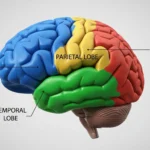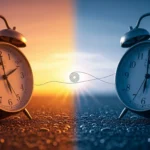
In a world finally talking openly about feelings, “acute melancholia” is an old-school name for a sudden, intense kind of deep sadness — like your mind getting hit by a thunderstorm out of nowhere.
Ever felt so heavy you couldn’t care about your favorite game or hang out with friends? That’s a tiny glimpse of it: loss of joy, slow thinking, and a body that feels tired even when you’ve slept.
Think of it as your brain’s alarm system stuck on urgent — not just a bad mood but a medical one that used to be described in old books.
So, why does the word still hang around? Because history helps us trace how doctors learned to recognize and treat serious depression, and understanding those roots can make modern help feel less mysterious and more hopeful.
Understanding the Historical Context of Melancholia
Long before people talked about “mental health,” ancient doctors were already trying to explain why some folks sank into deep sadness.
The Greeks called it melancholia — “black bile” — because they thought emotions came from body fluids.
Weird, right? Imagine your doctor today saying, “You’re sad because you’ve got too much black goo inside.”
But here’s the thing: acute melancholia wasn’t just feeling blue.
It felt like being struck by an emotional lightning bolt: sadness that came on suddenly and intensely, which left people tired, unable to sleep, and with no appetite.
Doctors in large, dark hospitals of the 1700s and 1800s wrote long reports about such cases, describing patients who had seemingly lost all their energy.
It might sound very dramatic, but what they actually saw was what we now call severe depression-showing even then that people tried hard to understand the powerful feelings inside their minds.
Symptoms and Characteristics of Acute Melancholia
Imagine waking up one morning and feeling like someone flipped a switch inside you — and suddenly, everything feels heavy, gray, and distant.
That’s what “acute melancholia” felt like to people centuries ago. Old doctors wrote about it in thick, dusty books, describing what they saw in heartbreaking detail.
Primary Psychological Symptoms:
- Profound and persistent sadness that seemed disproportionate to life circumstances
- Overwhelming feelings of hopelessness and despair
- Extreme anxiety and agitation or, conversely, marked lethargy and apathy
- Irrational fears and obsessive thinking patterns
- Difficulty concentrating or making decisions
- Social withdrawal and isolation from friends and family
- Loss of interest in previously enjoyed activities
- In severe cases, delusional thinking or hallucinations
Physical Manifestations:
- Significant sleep disturbances, including insomnia or excessive sleeping
- Changes in appetite, typically decreased, leading to weight loss
- Physical exhaustion and lack of energy
- Psychomotor retardation (slowed physical movements and reactions)
- Unexplained physical pain or discomfort
- Gastrointestinal problems
- General weakness and susceptibility to other illnesses
The “acute” designation indicated that these symptoms appeared suddenly or intensified rapidly, distinguishing this presentation from the more gradual onset of chronic melancholic states.
The Evolution from Melancholia to Modern Diagnoses
Ever notice how science keeps changing the names of things once we understand them better? It’s kind of like how “pluto” went from being a planet to… well, not a planet.
The same thing happened with melancholia.
As psychology and psychiatry grew up in the 20th century, doctors realized they needed clearer labels — ones based on what people actually experienced, not on old theories about “black bile” and body fluids.
So, the term melancholia slowly packed its bags and left the medical dictionary.
But its spirit? Still here — just with a new name.
Today, what those old doctors called acute melancholia is mostly what we’d recognize as Major Depressive Disorder with Melancholic Features.
Sounds fancy, right? Basically, it’s the modern version of that intense, life-draining sadness our ancestors wrote about.
According to the DSM-5 (that’s the big rulebook for mental health diagnoses), someone with this condition might lose all joy — like music suddenly sounding flat or their favorite food tasting like cardboard.
Even good news doesn’t lift them up. Their mood carries this deep emptiness, a kind of sadness that feels bottomless. And mornings? They’re often the hardest — waking up early with a heavy heart while the rest of the world is still asleep.
Other signs can include moving or thinking in slow motion, eating way less, or being crushed by guilt that doesn’t match reality.
It’s not just being “sad.” It’s like your brain’s color settings got turned to grayscale — proof that while the words have changed, the human struggle behind melancholia is as real today as it was centuries ago.
Treatment Approaches: Then and Now
If you think going to therapy sounds tough, imagine living in the 1800s when doctors thought sadness could be “bled out” of you — literally.
Back then, people didn’t know much about how the brain worked, so their treatments for acute melancholia were often a wild mix of hope and guesswork.
Historical Treatment Methods:
In the 18th and 19th centuries, doctors tried everything from forcing patients to rest in total isolation (“Don’t worry, being alone in a silent room will fix you!”) to prescribing special diets and bloodletting — because they thought draining “bad humors” might balance your emotions.
Yeah… not exactly comforting.
Some used cold baths or water therapy to “shock the sadness away.”
Later on, by the early 1900s, they introduced electroconvulsive therapy (ECT). It looked scary, but oddly enough, a safer, modern version of it still helps people today when other treatments fail.
Modern Treatment Approaches:
Fast-forward to now, and things look a lot brighter — and way more scientific.
For severe depression or melancholic features, treatment is like a team effort between brain chemistry, therapy, and lifestyle.
Medication
Doctors often start with antidepressants — think of them as tools that help your brain’s “mood messengers” (like serotonin and norepinephrine) get back to work.
Some older medications, like tricyclic antidepressants, still shine for certain people, even after decades.
Psychotherapy
This is where the real mental workout happens.
Therapies like CBT help people catch and challenge the thoughts that drag them down, while IPT helps repair strained relationships and build social support.
It’s like giving your brain a roadmap out of its own maze.
Lifestyle Interventions
Modern treatment doesn’t stop at pills or talk — it’s about living well, too.
Exercise, balanced sleep, good food, and staying connected with others all boost recovery. Think of it as recharging your emotional batteries.
Advanced Interventions
For the toughest cases, doctors now have high-tech tools like TMS (a kind of brain “reset button” using magnets), ECT (in a much safer, controlled form), and even ketamine therapy for rapid relief.
Recognizing Severe Depression Today
We might not call it acute melancholia anymore, but the storm it described — that sudden crash into deep, overwhelming sadness — still exists.
Today, we just call it severe depression. And knowing the signs isn’t just important; it can literally save lives.
So, how do you tell when sadness has turned into something more serious? It’s not just feeling down after a bad day.
It’s when the sadness sticks around — like an unwanted shadow that follows you everywhere. It’s waking up and feeling empty, even when you can’t explain why.
Key warning signs include:
- Feeling sad, numb, or hopeless almost all the time — like joy got deleted from your emotional playlist.
- Losing interest in the stuff that used to light you up — music, friends, hobbies — they just… don’t hit the same.
- Sleep turning weird: too little, too much, or waking up at 3 AM staring at the ceiling.
- Eating habits flipping — suddenly no appetite or eating nonstop just to feel something.
- Being exhausted no matter how much you rest, like your body’s battery never charges.
- Feeling worthless or guilty for no real reason, as if your brain’s become your worst bully.
- Struggling to focus, make decisions, or care about anything.
- And the hardest one to talk about — thoughts of death or wanting to disappear.
If any of that feels too close to home — or if you see it happening to someone you care about — don’t wait it out. Depression isn’t weakness, and it’s not something you can just “snap out of.”
Conclusion: Bridging Past and Present
Think of acute melancholia as an old name for a sudden, crushing kind of depression — the kind of pain ancient doctors tried to explain with “black bile” (yikes!).
Why does that matter today? Because those early observations tracked the same human suffering we see now, even if the explanations were wild.
Over time we upgraded our tools — from guesswork to real science — kind of like moving from a flickering candle to GPS for the brain.
That progress means real treatments exist now: therapy, meds, and advanced options that can bring people back from the dark.
So if you or someone you care about feels hit by that sudden heaviness, what should you do? Talk to someone — it’s brave, not weak — and remember that hope and help are real.



